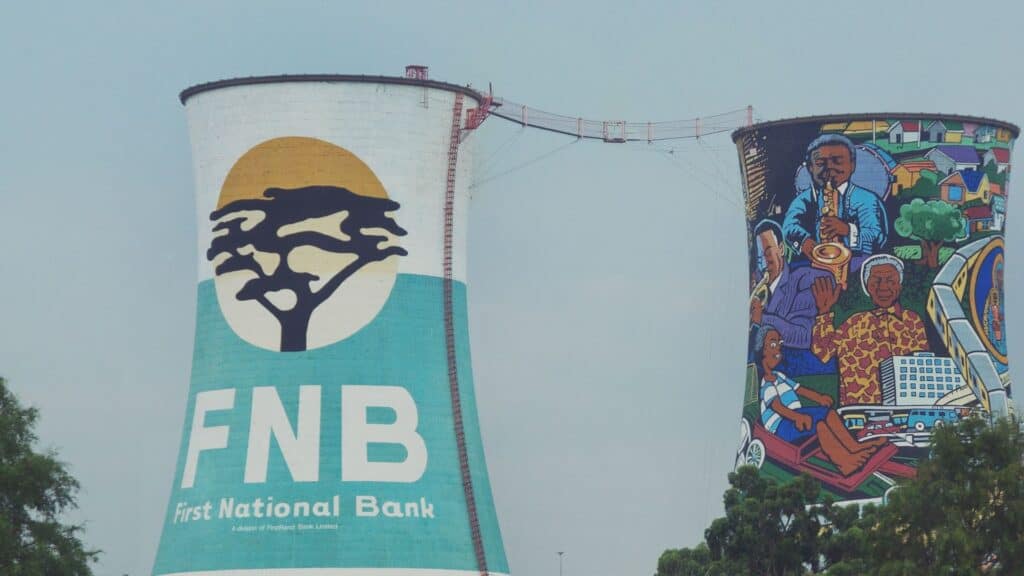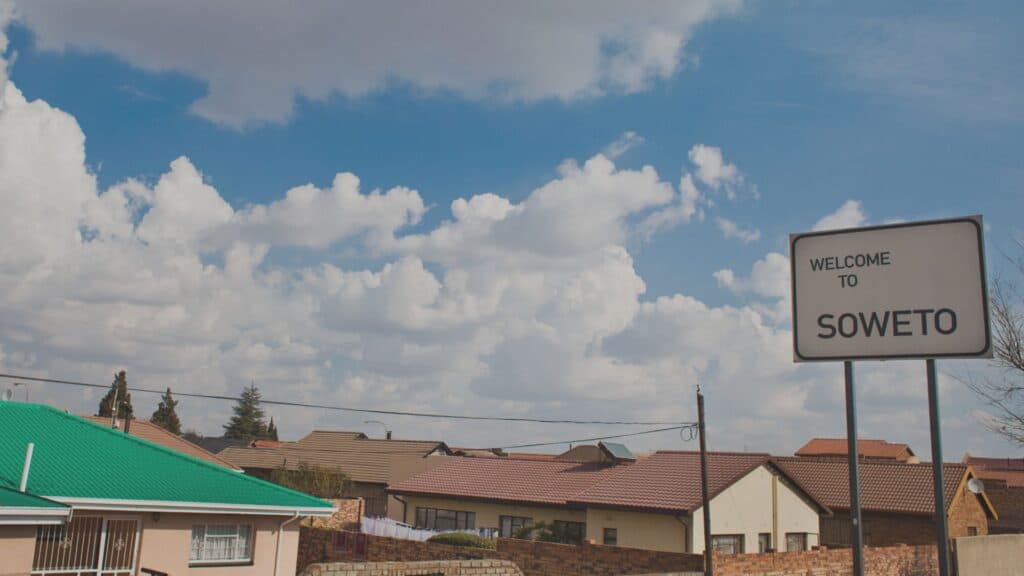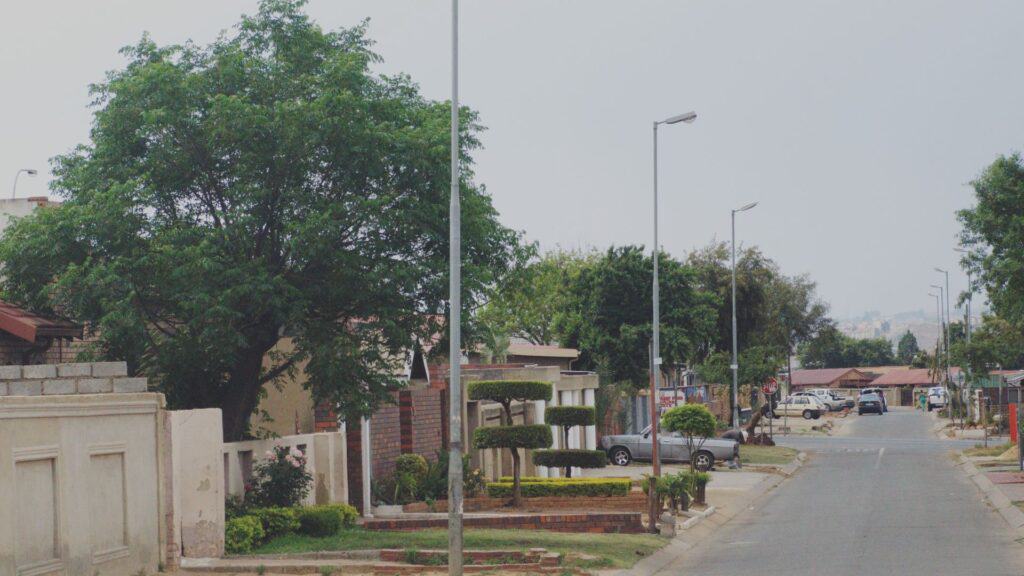Are you planning to participate in the next Soweto Marathon?
If yes, then you’re in for an exhilarating experience that you’ll forever cherish.
Known as “The People’s Race,” the African Bank Soweto Marathon holds a special spot in the hearts of many South African runners. The marathon’s routes are carefully planned to showcase the rich history and culture of Soweto while also challenging your running skills.
In this blog post, we break down everything you need to know about the Soweto Marathon route to help you prepare for the big day.

Soweto Marathon Course Overview
The Soweto Marathon starts and finishes at the iconic FNB Stadium, also known as Soccer City, which hosted the 2010 FIFA World Cup. The stadium is located in Nasrec, and runners will cover various parts of Soweto before returning to the stadium for the finish.
The start and finish points are well-marked and easy to locate.
First 5 Kilometers (3.1 miles):
Starting at the FNB Stadium, head east for about 260 meters (853 feet) and make a left turn onto Golden Highway. Keep an eye out for the traffic circle just before this turn. Continue straight along Golden Highway for approximately 1.3 km (0.8 miles) before making a right turn onto Rand Show Road.
This part introduces the first hilly section of the route. Remember to start at a manageable pace, don’t rush. Note that Rand Show Road becomes Ben Naude.
Continue on Ben Naude, descending gradually to catch your breath before facing another hill. Then, make a left turn into Martinus Smuts Drive. About 400 meters (1312.3 feet) before turning right onto Mncube Street, there’s a very steep hill.
Follow the street as it takes you forward. Take a left into Collinders Street, and then make a final right turn onto Chris Hani Road and take another breather.
Kilometers 6-15 (3.7 – 9.3 miles):
You’ll hit your 6km (3.7 miles) mark on Chris Hani Road. Remember, you’ll cross it again after covering almost 7km (4.3 miles). You’ll pass right in front of the Chris Hani Baragwana Hospital around 6.2 km (3.9 miles)
This long stretch continues for another 2-3 km (1.2 – 1.9 miles) until you turn left into Morola Street, which later becomes Mdjadji Street in Pimville, named after James Howard Pim, a Johannesburg city councillor. Mdjadji Street leads you past the Klipttown golf course.
After passing the golf course, turn left at the circle onto Klipspruit Valley Rd. You’ll then turn around the circle into Union Rd and proceed to turn right into Union Street. After that, turn left into Klispruit Valley Rd and head north until you reach Chris Hani Road again.
While running, you’ll encounter local landmarks like the Walter Sisulu Square, known as the Walter Sisulu Square of Dedication, located in the heart of Kliptown. The lively atmosphere with cheering spectators will keep your spirits high!
Kilometers 16-25 (9.9 – 15.5 miles):
At this stage of the race, you’ll be running through the vibrant neighbourhoods of Soweto, including Meadowlands and Orlando. You’ll also have the opportunity to pass through the historic Vilakazi Street.
This iconic street is famous for being the only one in the world to have housed two Nobel Prize winners, Nelson Mandela and Archbishop Desmond Tutu.
Keep an eye out for the colourful street art that lines some of the roads.
The locals might even join in and run a few meters with you (outside the course), offering words of encouragement along the way.

Kilometers 26-35 (16.2 – 21.7 miles):
The route then continues through the lively streets of Soweto, passing by the Hector Pieterson Memorial and Museum, commemorating the Soweto Uprising of 1976.
You will be cheered on by enthusiastic locals lining the streets, creating a contagious energy that motivates participants to push through the challenging sections of the marathon.
The energy from the crowds will help you stay motivated, even as your legs might start to feel a little weary.
Kilometers 36-42 (22.4 – 26.1 miles):
As you approach the finish line, the route guides you back to FNB Stadium. Along the way, you’ll pass local schools and community centres, giving you a firsthand experience of the vibrant spirit of Soweto as the community comes together to cheer on the runners.
Keep in mind that this part of the course features two particularly challenging uphill sections. Keep pushing forward; you’re almost there!
Finish Line:
As you approach the FNB Stadium, you’ll hear the crowd cheering you on. The energy is contagious, and you’ll feel a rush of pride and accomplishment as you cross the finish line. Take a moment to savour the excitement and celebrate with your fellow runners.
You’ve done it! It’s a moment to cherish and remember as you reflect on the incredible journey you’ve just completed.
Landmarks Along The Soweto Marathon Route
The Soweto Marathon is a significant event that not only offers you a challenging course but also provides an opportunity to engage with Soweto’s rich history and cultural significance.
As you make your way through the course, you will pass by some of the township’s most notable landmarks.
These include the renowned Chris Hani Baragwanath Hospital, known for its contributions to healthcare in South Africa, and the Regina Mundi Catholic Church, which played a vital role during the apartheid era.
The Soweto Marathon route also includes the Hector Pieterson Memorial, which is a powerful symbol commemorating the 1976 Soweto Uprising. This memorial holds great historical significance in Soweto’s history.
Additionally, the route passes by the famous Orlando Stadium, a notable sporting venue with a rich history of hosting significant events and gatherings in the community.
Fun Fact: Sowet is an acronym for “South Western Township”. It was a focal point of anti-apartheid struggles, and the marathon serves as a tribute to the endurance and courage of the community during those challenging times.

Distance and Courses
There are three categories in the Soweto Marathon: the full marathon (42.2 km/26.2 miles), half-marathon (21.1 km/13.1 miles), and 10K (6.2 miles) run.
The full marathon and half-marathon have similar routes, taking runners through some of Soweto’s most iconic landmarks, including Vilakazi Street, the Orlando Cooling Towers, Chris Hani Hospital, and the Regina Mundi Church.
The 10km run has a different route but still offers a fantastic experience.
Terrain And Elevation
The Soweto Marathon is a challenging marathon with steep hills and long gradual inclines. The terrain for the race consists primarily of asphalt (tar), with a few very short sections on concrete paths.
The marathon’s highest point is at the 34km mark, where runners face a gruelling uphill climb. It’s essential to train well and build your endurance before race day.

Grab your Soweto Marathon Training Road map here!
How To Survive Soweto Marathon’s Grueling Second Half
Marathons are no doubt a test of endurance, and the second half is often the real challenge. By that point, you’ve already covered a significant distance, putting strain on your body for over an hour.
In the case of the Soweto Marathon, the second half is particularly demanding and is often considered the most challenging 21 km (13 miles) you’ll face in a marathon south of the equator.
As you run the Soweto Marathon, it’s crucial not to get carried away by the energy of the crowd. It’s tempting to let the cheering spectators boost your spirits, but you must remember to conserve your energy.
This marathon is a single, challenging 42-km (26.2 miles) lap, so every kilometer is new territory, and you can’t anticipate what’s next. While the first half descends in altitude, the second half involves climbing again.
Adding to the challenge, the sun can be scorching, with temperatures often rising above 25 degrees Celsius as early as 8 am.
Running a demanding route in such high temperatures is no easy feat. To prepare for this, you might want to adjust your training in the coming weeks.
Consider starting your weekend-long runs an hour later, say at 7 am instead of 6 am, to get used to running in the heat.
During your taper period before the race, you could even shift to doing two runs starting at midday. This will help your body adapt to the hot conditions you’ll face on race day.
MUST: Running In Hot Weather: The ESSENTIAL Guide To Running In The Heat
In the second half of the Soweto Marathon, you’ll encounter two significant climbs: the Vilakazi Street hill and the hill on New Canada Road toward Main Reef Road.
While there are other challenging hills, these two are particularly noteworthy. When you reach Vilakazi Street, you can soak up the lively atmosphere if you’ve maintained your pace.
Although hill repeats might not be every runner’s favourite training method, they are incredibly effective for building muscle endurance, speed, and strength – all crucial benefits for this challenging marathon.
Running on a hill provides a comprehensive workout, engaging your hamstrings, glutes, quads, and calves. If you’re new to hill repeats, start with a hill that’s 100-200 meters (328 – 656 ft) long and not overly steep.
It’s important to choose a hill that you can comfortably run on; otherwise, it won’t be as effective.
Hill repeats essentially act as a form of resistance training, so aim to do between six and eight repeats, pushing yourself without overexertion.
Related: Running Hill Repeats: How to Calculate The Gradient
Water And Nutrition Stations Along The Soweto Marathon Route
During the Soweto Marathon, you’ll find several water and nutrition stations strategically placed along the route.
These stations are manned by dedicated volunteers who provide runners with water, energy drinks, and sometimes snacks to keep you fueled and hydrated during the race.
Additionally, some local vendors may offer refreshments along the way.
To ensure you stay well-hydrated, there are waterpoints approximately every 3 km (1.9 miles) including:
- Ben Naude Street
- Chris Hani Road
- Modjaji Street
- Klipspruit Valley Road (2 CC)
- Koma Street
- Bolani Street (by Soweto Theatre)
- Mzilikatse Street (Mofolo Park)
- Vilakazi Street
- Orlando Stadium
- New Canada Road (3 points on this road)
- Main Reed Road
- Colorado Street
- Nasrec Road
- Finish at FNB Stadium
These water points are crucial for maintaining your energy and performance throughout the race, especially during the warmer months. Be sure to make the most of these hydration opportunities along the way.

Medical Support And Security
The Soweto Marathon has a full medical team to ensure the safety of all participants. There are first aid stations throughout the route, and ambulances are on standby to assist any injured person.
Sweeper vehicles will be available following the back runners.
Additionally, the marathon has a robust security team, including police officers, marshals, and event organizers.
Will There Be Toilets Along The Soweto Marathon Route?
Yes, there will be portable toilets available at various points along the Soweto Marathon route to accommodate runners’ needs during the race.
These toilets are typically strategically placed at regular intervals to provide convenience without disrupting your pace.
What Are The Cut-off Times For The Soweto Marathon?
The cut-off times for the African Bank Soweto Marathon are as follows:
- Full Marathon (42.2 km/26.2 miles): 6 hours
- Half Marathon (21K/13.1 miles): 3½ hours
- 10K race: 2 hours
Additionally, there will be a half-way cut-off point at 21.1km (13.1 miles), which participants must reach within 3 hours and 20 minutes for their safety.
What To Bring On Race Day
On race day, make sure to bring the following essential items:
Race Number:
- Wear race numbers prominently on the front of your upper garment or vest.
- Display the provincial license number on the front and back of your upper body garment or the issued temporary license number on the back.
- If you’re registered with ASA-affiliated clubs, you should wear your club colors along with your 2023 license number on the front and back, along with the issued race number.
- Ensure that the official race number does not cover the ASA sponsor on the provincial license.
Timing device:
- Remember to wear your ChampionChip timing device on race day, attaching it to your running shoe.
- Be aware that timing mats will be placed at various points along the route, and the timing is mat-to-mat.
The Soweto Marathon is not just a race; it is a celebration of the rich heritage and spirit of South Africa, bringing people from all walks of life together to experience the beauty and resilience of Soweto.
By knowing everything you need to know about the marathon route, you’ll be better prepared to face the challenges of the race day. Remember to train well, stay hydrated, and pace yourself. Good luck and enjoy the beautiful Soweto Marathon experience!



Comments are closed.